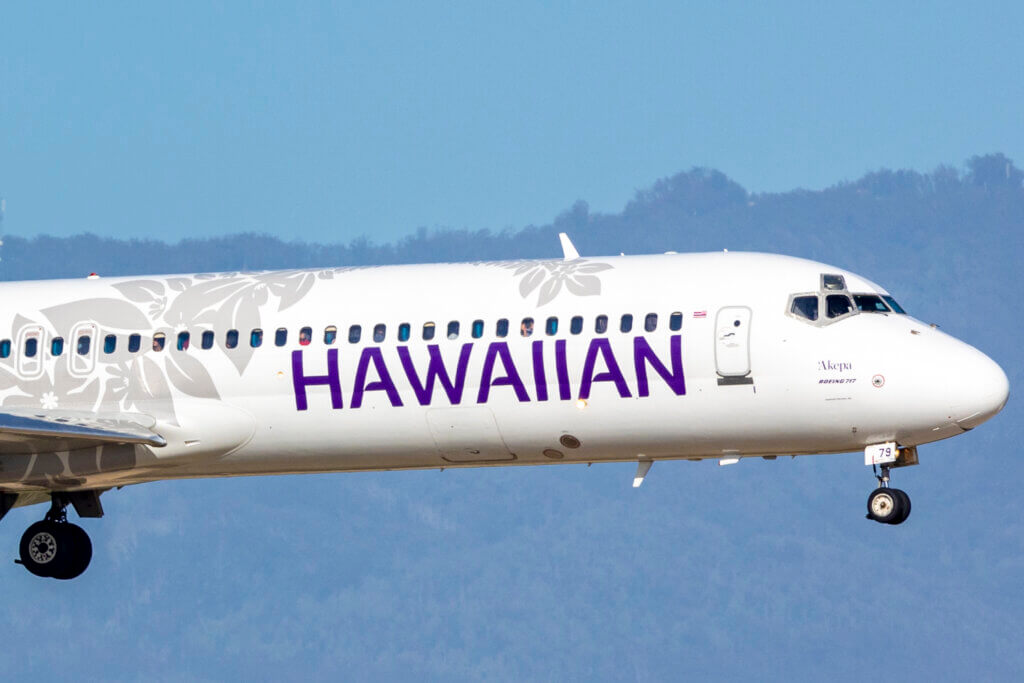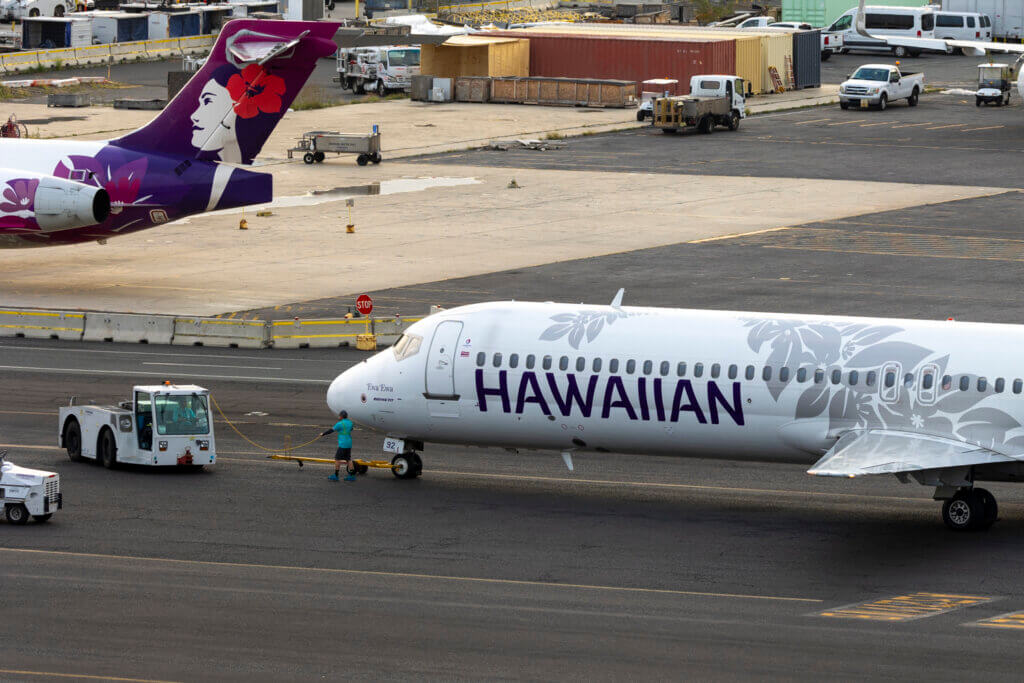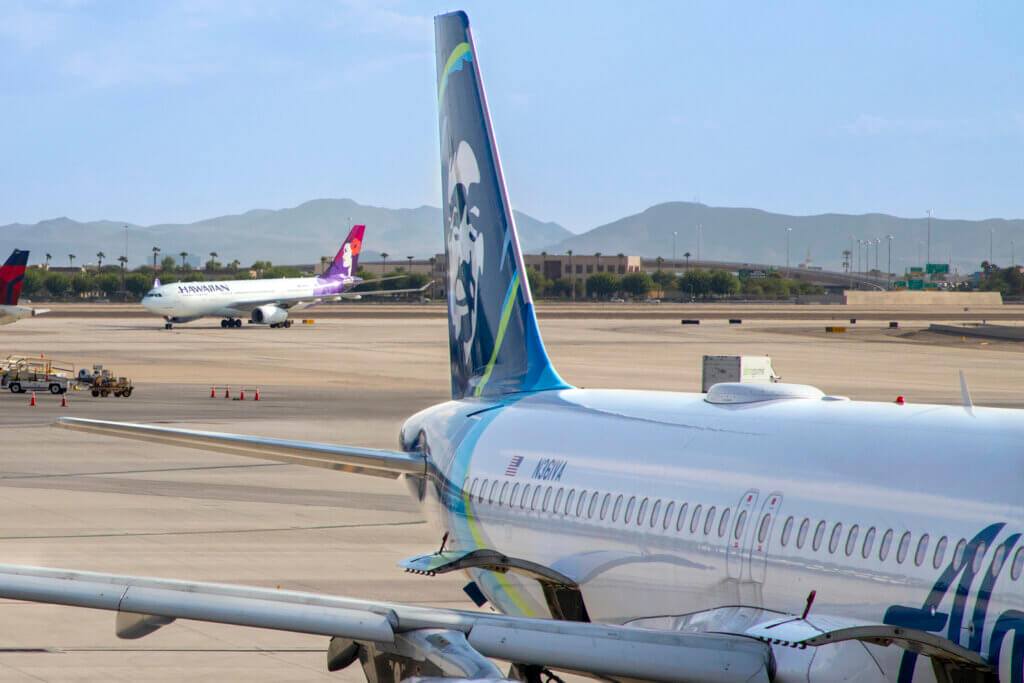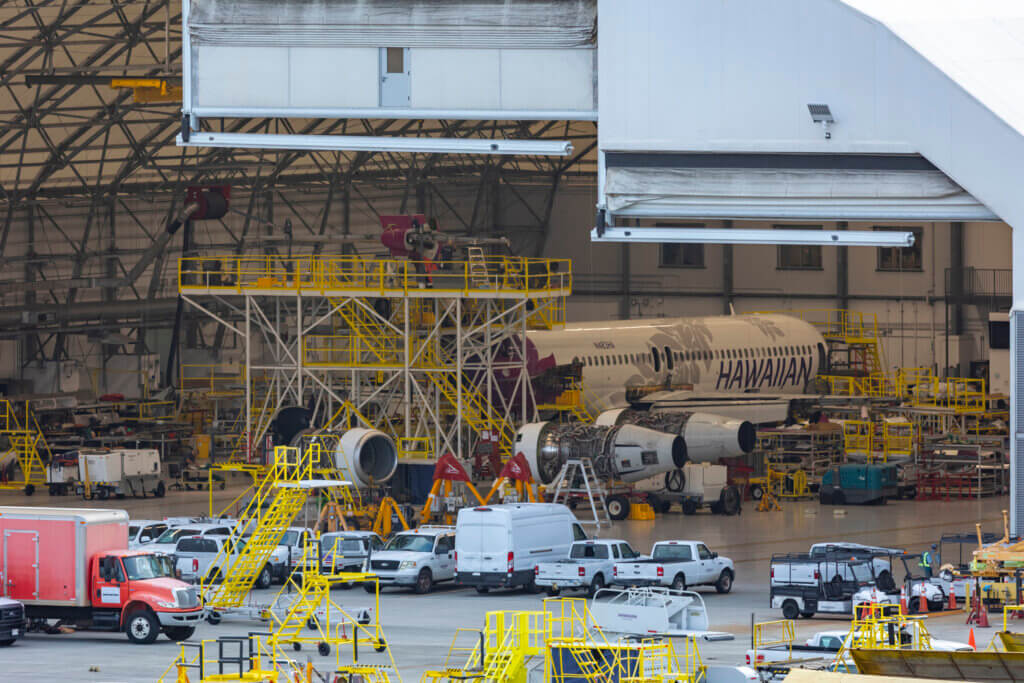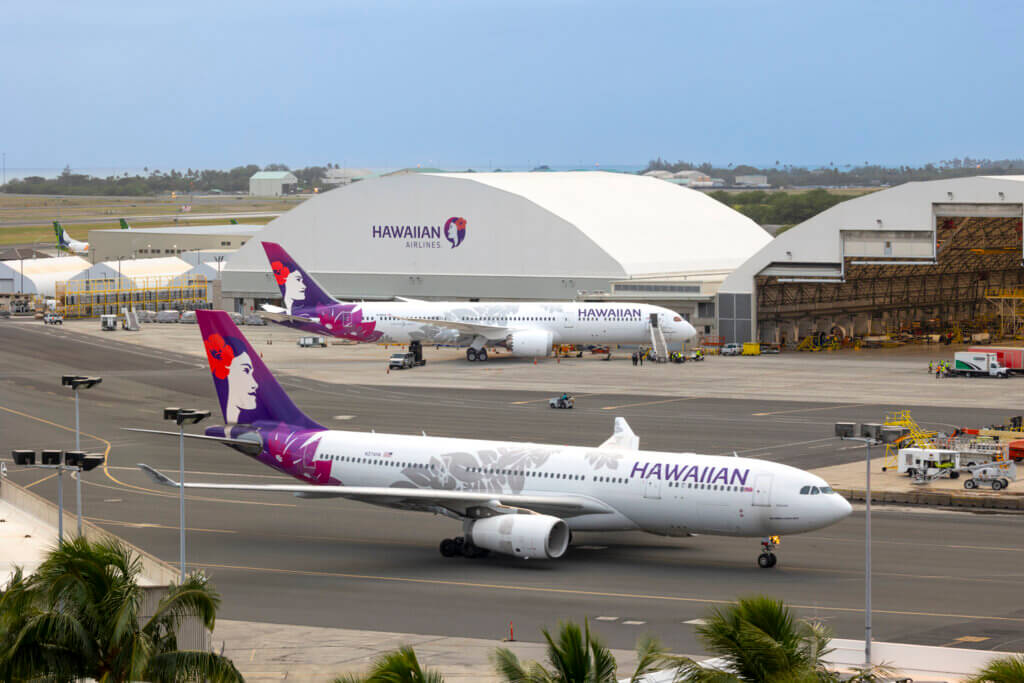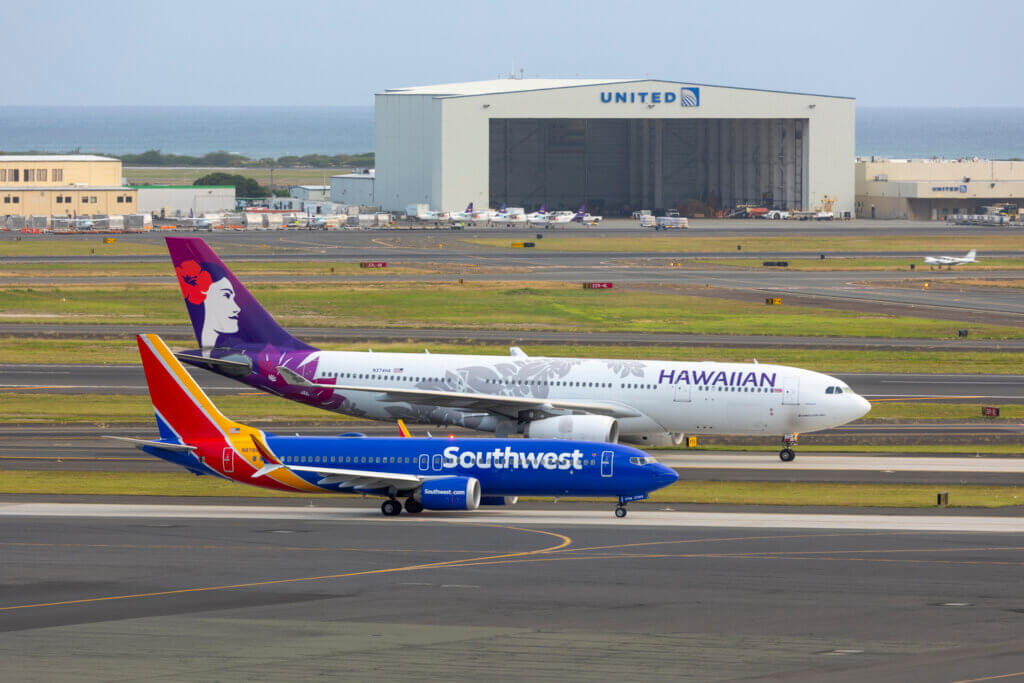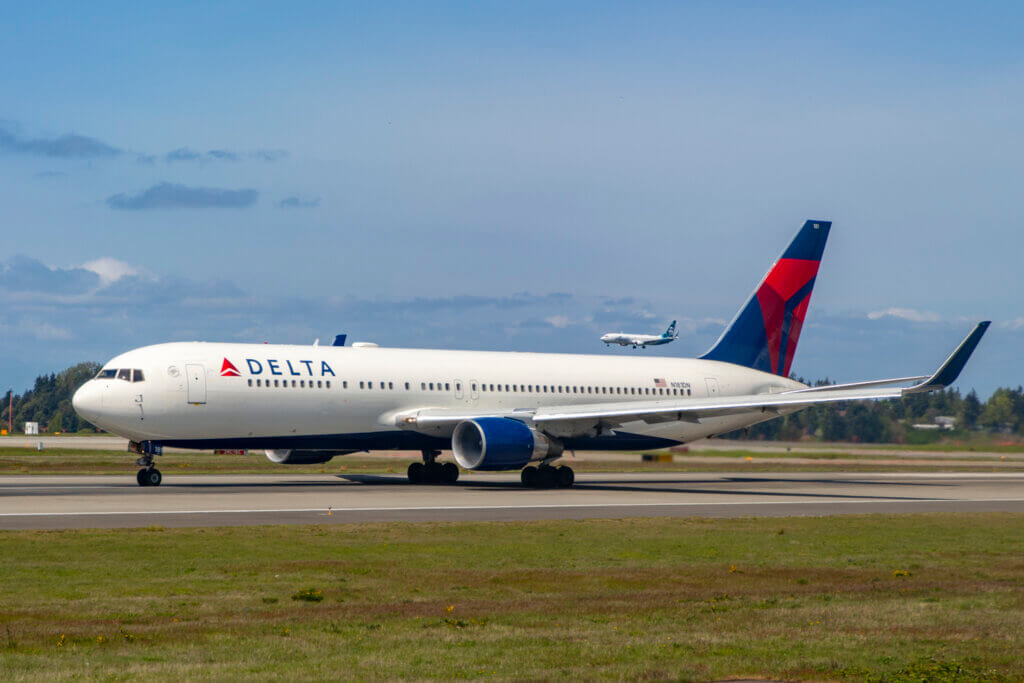Honolulu-based KHON 2 News reported on Monday that a group of Hawaiian passengers filed suit to block merger Alaska Airlines. However, to me, the argument being presented by the plaintiffs is rather weak. Let’s discuss.
There’s no doubt that Alaska Air’s plan to acquire Hawaiian Airlines is a controversial one. Already, we’ve seen a shareholder file lawsuit claiming that they’ll receive better value if Hawaiian stayed independent. I thought that – which was dismissed – was laughable, as, oh, I don’t know…
Did the shareholder ever bother to look at Hawaiian’s financial performance? They’re bleeding to death and aren’t expecting that to change for the next 2-3 years – if they survive that long. And I think most shareholders realized that, as they voted to approve the merger back in February. But this latest lawsuit… wow.
Hawaiian Passengers Filed Suit to Block Merger with Alaska
If the shareholder lawsuit seemed frivolous to me the one in which Hawaiian passengers filed suit to block merger with Alaska is even more ridiculous. The one and only premise for the lawsuit is that it’ll reduce competition. And, sure, the merger will take one carrier out of what is a high-competitive market. Seriously. Today, nearly ever major airline in the U.S. has service to Hawaii, including:
- Alaska
- American
- Delta
- Hawaiian
- Southwest
- Sun Country (seasonal)
- United
You know what airlines are missing from this list? Allegiant, Frontier, JetBlue, and Spirit. That said, JetBlue has an extensive codeshare agreement with Hawaiian, and Frontier is said to be considering Hawaii service when it receives its Airbus A321XLRs. I sincerely hope that doesn’t happen, but it is what it is.
Anyway, today, the big dog in Hawaii – Continental U.S. service isn’t Hawaiian – it’s United. According to Hawaii Tourism Authority data, the June 2024 schedule has United accounting for 25.48% of all available seats, followed by Hawaiian at 25.33%, Alaska at 15.02%, Southwest at 14.37%, Delta at 11.19%, and American at 8.61%. Yes, combined, Hawaiian and Alaska will account for 40.35% of all available air seats between Hawaii and the Continental U.S.
What’s even more hilarious is that the attorney representing the plaintiffs, Joseph Alioto of Alioto Law, a law firm specializing in airline class action lawsuits, goes on to say that if the merger closes, Alaska would have “40% of the Hawaii U.S. mainland market and over 60% of the interisland market” LOL. What? Yeah, Hawaiian already has the lion’s share of inter-island travel. Alaska or not, NOTHING is changing that short of Hawaiian going out of business. Then we’ll be stuck with Southwest and Mokulele.
Alioto goes on to say “that if the merger is granted, Alaska likely would reduce flights on 12 overlapping routes, raise fares and other fees, and reduce capacity.” Uh, no kidding. I think the Department of Justice would force Alaska to do so, no? And wouldn’t that make way for more competition? More on that below.
If you look at the above figures in a vacuum, and ignore the attorney’s ididic statement, it’s easy to see why the Hawaiian passengers filed suit to block merger with Alaska. But a judgement against the merger cannot happen in a vacuum, can it?
DOJ Review
U.S. law permits consumers to file a lawsuit like this, but the Department of Justice is conducting its own review. That review will be far more detailed than any opinion from the plaintiffs stating that the merger will reduce competition. After all, the DOJ will be looking both airlines’ entire network to see how much of it overlaps and, therefore, how much harm the merger will cause to consumers across the country. They’ll also weigh this data against other factors, such as Hawaiian’s current financial condition and other merger alternatives.
In the end, the DOJ allow the merger to proceed as-is, allow the merger with the divesture of certain rights (gates, slots, etc.), or sue to block the merger altogether.
KHON 2 News, like many others in the general public, seems to think that the JetBlue-Spirit lawsuit is a bellwether for what will happen here. It is not. These are two entirely different mergers with vastly different airlines. Again, JetBlue was a LCC trying to acquire Spirit, a ULCC, and both had rather substantial route overlaps. The fact that higher-cost JetBlue was trying to acquire lower-cost Spirit just so it could absorb its assets and shutter the airline didn’t sit well, either.
As we all know, that’s not what’s happening here. Alaska plans to maintain Hawaiian as a quasi-separate airline in a similar vein to what we see in Europe with IAG, Air France KLM, and Lufthansa.
So, yeah, Hawaiian passengers filed suit to block merger with Alaska are entitled to their own opinion and, thus, their own day in court, but they don’t really know what they’re talking about, do they? And I’m sure their attorneys will laugh all the way to the bank regardless of the outcome.
Labor Argument
Alioto claims that Alaska’s acquisition would harm Hawaii’s economy via massive layoffs. Yes, workforce reductions are part of the plan, but primarily at higher corporate levels. Most of the 7,200 people Hawaiian employs today will retain their jobs. But then Alioto gets specific, stating “if Alaska were ever able to acquire Hawaiian, their reservation center in Honolulu would be transferred to Seattle. That’s what happened when Alaska bought Virgin America.”
Hey, genius. Have you ever tried calling Hawaiian’s reservation center? It’s NOT in Hawaii. It’s in the Philippines. And, guess what? Most people would probably celebrate this. I’ve had to call a couple of times, and let me tell you, it’s infuriating dealing with them. Half the time, the person you’re talking to has no idea what they’re doing. “No, you can’t change your flight.” Um, what? Hawaiian lets you (this was a Main Cabin fare) and doesn’t charge a change fee.
Beyond the call center, a lot of Hawaiian’s accounting is outsourced to India, while a good chunk of their IT is in Arizona.
Alioto goes on to say “Virgin America was a new, innovative, exciting airline, and Alaska bought them and no one ever heard of them anymore.” Yeah, that was the plan. It was going to be Alaska or JetBlue. JetBlue wasn’t going to preserve the Virgin branding, either, and Virgin was going to fail without being acquired. Neither JetBlue or Alaska wanted to continue paying Branson fees to using the Virgin brand.
Financial Condition
Since I mentioned it in the previous section, let’s discuss Hawaiian’s financial condition. After all, this seems to be the part that was given the least consideration as Hawaiian passengers filed suit to block merger with Alaska Air.
As we all know, Hawaiian is bleeding cash. Their negative earnings put them in the same company as JetBlue and Spirit. They are an airline that’s literally fighting for its life. KHON 2 New brought this point up with the other attorney in the case, and this is what he had to say.
They’ve never raised it as an issue,” O’Toole said. “Nobody has said to the regulators and anybody else that ‘we’ve got to be bought out. ‘The way they take care of it is not to let a competitor come in and buy them out. They may have a lot of other ways to deal with it, which is you get new management, even have to restructure in bankruptcy, or finding another way out of it.
Oh, ok. Is that how that works? Hawaiian isn’t going to go around advertising that it’s worried it’s going to go out of business cuz, you know, that’s actually bad for business. It sows doubt in customers AND investors, and the airline desperately needs both right now.
We also know from the JetBlue-Spirit case that the courts do take that into consideration, though they didn’t weigh it as heavily as other factors in that one. That could end up being the case here, too, but the decision in that case doesn’t set precedents for what happens here.
Of course, O’Toole’s take is a bad one. Not once have shareholders or the Board of Hawaiian tried to ouster Ingram. Could they? Sure. But it doesn’t seem likely. Could they go through bankruptcy for a third time? Yes. But what will the airline look like after it emerges, if at all? Hawaiian agreed to the sale because it acknowledged that doing so would be in their shareholders’ best interest, likely because they know the writing is on the wall.
Just look at their 2023 annual report. At the end of 2022, Hawaiian had $1.4 billion in liquidity. On December 31, 2023, that fell to $0.9 billion. They’re running out of money (and, therefore, time) to right the ship. This is especially true when you considered the fact that over the next five years, Hawaiian must spend hundreds of millions of dollars on necessary improvements (IT) and aircraft leases. Mind you, this is before expenses related to its 787 purchases, which breakdown like this: $476 million in 2024, $630 million in 2025, $426 million in 2026, and $253 million in 2027.
Things get even worse if you look at Hawaiian’s debt commitments, which include $1.6 billion in current outstanding obligations, most of which matures next year. I won’t bore you with the details here, but you can look at them in detail here.
Further, if we take look at their pre-pandemic performance, Hawaiian’s net income fell from a high of $330.6 million in 2017 to $224 million in 2019. Like everyone else, they went negative in 2020, but unlike most others, haven’t been able to recover since. They blame Japanese demand for this, but Japanese demand has recovered to around 50% of pre-pandemic figures and has been augmented by increased North American demand, though that has been falling off.
So what gives? Well, expenses and debts aside, the largest hurdle facing Hawaiian is competition.
Competition
As Hawaiian passengers filed suit to block merger with Alaska Air, they complain about reduced competition. Sure, more competition is always better than less, but what happens when a competitor just can’t afford to compete? We know the downward pressure Southwest Airlines is exerting on fares is harming Hawaiian.
Hawaiian passengers filed suit to block merger with Alaska Air and their attorneys will probably point to another aggressive competitor as to why this shouldn’t be a reason for a merger – go! Airlines. However, Southwest and Mesa Air (go!’s parent) are not at all alike. Mesa is an awful (and awfully run) regional airline that used confidential information from Hawaiian’s and Aloha’s bankruptcies to compete against them. They very quickly found that they couldn’t make it here, either, and Mesa Air itself is in a bit of financial trouble right now, too.
Southwest, on the other hand, despite their IT shortcomings, is much more competently run. They have far more resources (financial and otherwise) to effectively compete in Hawaii, not only against Hawaiian, but Alaska, American, Delta, and United, too. They’re the only airline to successfully pull off inter-island service since Aloha’s demise back in 2008, and they’re systematically targeting Hawaiian’s stronghold domestic trans-Pacific routes, including those to Las Vegas.
Hawaiian has never dealt with a competitor as aggressive and competent as Southwest.
Alaska, too, is facing competitive challenges all its own. After all, its fortress hub in Seattle has been under siege by Delta for the past decade. Sure, Delta hasn’t been aggressively trying to boot Alaska, but it has been chipping away at its business. Delta is in it for the long game, and Alaska knows this. In fact, Cranky recently had a post about this. While Alaska is healthy now, their minute size makes it difficult for them to effectively compete against the three enormous legacies and its closes peer – Southwest.
This is why Alaska is seeking to grow via acquisition. It know it needs to diversify beyond being a primarily domestic airline. But other than being absorbed by a bigger carrier, there’s no way for it to do so other than to acquire Hawaiian. After all, Hawaiian has wide body jets capable of Lower 48-Asia flying, which is something no other smaller U.S. carrier has.
United also remains a significant threat to both. United competes with both in many of their markets, and has been on the attack against Hawaiian to try to pry away its coveted Haneda slots. And they kind of succeeded recently, when Hawaiian relinquished its KOA/HNL-HND nighttime slot, which was scooped up by United for its new Guam-HND service.
Of course, if Frontier does decide to enter the Hawaii market, that’ll likely but increased downward pressure on fares, squeezing Hawaiian even more.
Hawaiian Passengers Filed Suite to Block Merger, Final Thoughts
The more that I think about it, I wonder if that Hawaiian passengers filed suite to block merger is a front for someone else’s plan to give Hawaiian the push it needs to disappear? How moronic do you have to be to think that Hawaiian is doing a-ok and that things will be better under the status quo?
Then again, the Hawaiian passengers filed suite to block merger likely didn’t do any homework at all, and neither did their counsel. Just look at this gem from O’Toole.
What happens to the state if this thing gets managed from afar with little care about Hawaii or Hawaiian? And then what happens to the travelers in terms of higher fares and less competition?
Do you think Hawaiian truly cares about anything but its shareholders? Alaska Airlines spends as much money, if not more, in our communities, and they’ve done so long before the merger came up. Alaska even has a local executive in Hawaii, while Southwest has a major operations center here. Let’s also not forget the fact that Hawaiian isn’t even incorporated in Hawaii – Hawaiian Holdings, Hawaiian Air’s parent company, is a Delaware corporation. It seems like the attorneys to this case are grasping, and it’s hilarious and maddening all at once.
Look, I don’t want to see Hawaiian go away, either. And under Alaska’s proposal, it won’t. They’ve committed to preserving the brand, all union positions, and some corporate presence in Hawaii. This is literally the best-case scenario. Without this merger, Hawaiian’s future becomes a huge questions mark. Alaska is the only airline that’s small enough to possibly pass anti-trust reviews, while having enough resources to purchase Hawaiian. There are no other options. And Hawaiian is running out of time and options. This is it, folks.

